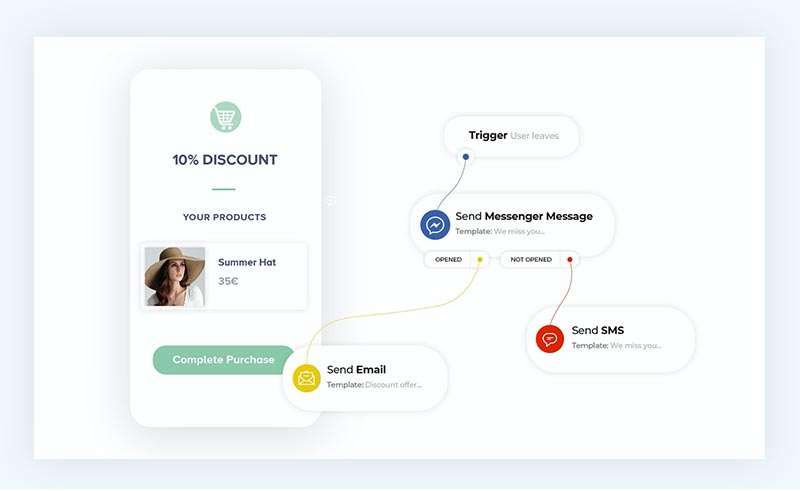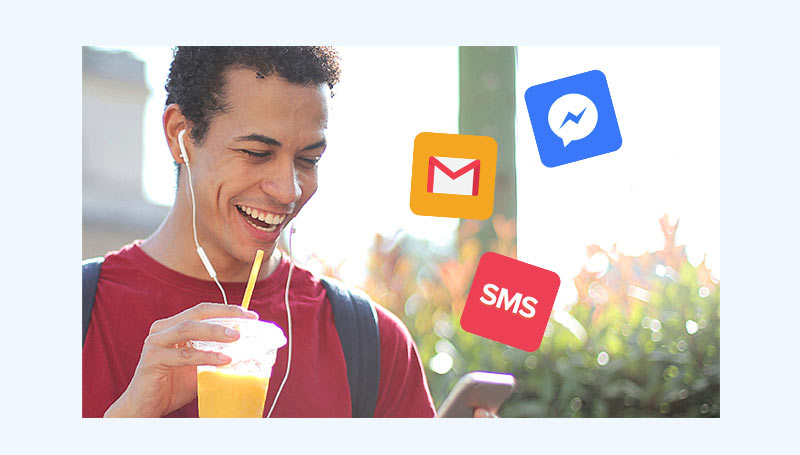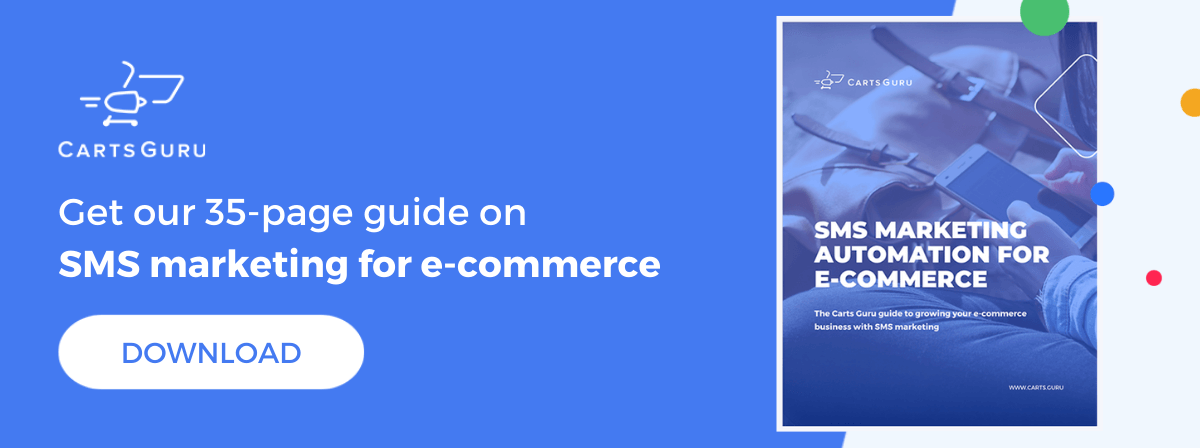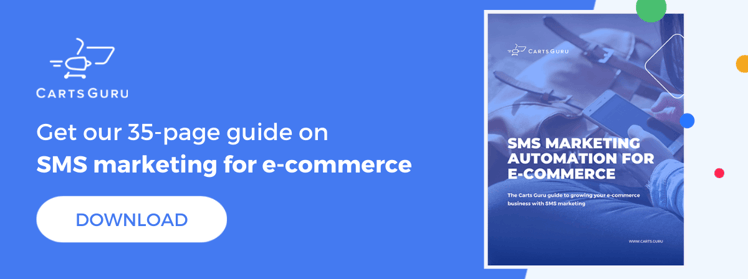
Multi-channel marketing is a must for any business to succeed in e-commerce. When brands combine channels such as SMS and email into one cohesive marketing campaign they can reach the right customer, with the right message, on the channel they respond with best.
Are you ready to implement a multi-channel marketing strategy in your own ecommerce business? In this article, we run through the key benefits of multi-channel marketing and convince any undecided e-merchants that multi-channel marketing is the way to achieve continued e-commerce growth.
What is a multi-channel marketing strategy?
A multichannel marketing strategy involves interacting with customers consistently on more than one channel, such as a mobile app or a website, email, SMS, social media, PPC, etc. Implementing a solid multi-channel marketing strategy is crucial for e-commerce growth. It gives the customer a choice of when and where they want to make their purchase, which in turn boosts conversion rates.
According to research, it takes at least six touch-points for the average consumer to make a decision and go through with a purchase. The more channels you use to communicate with potential customers, the sooner that sixth, final touchpoint will come.
To give you an idea of the potential benefits: brands using a multichannel marketing strategy (on 4 or more channels) see a 300% increase in ROI over single or dual-channel marketing campaigns. Business to business (B2B) campaigns using multichannel marketing also see a 24% increase in conversion rates.

Here are 7 key benefits of multi-channel marketing, which when combined, put e-merchants on the path to sustained e-commerce growth.
What are the benefits of multi-channel marketing for ecommerce?
1. Maximize audience reach with fall-back logic
The main problem with a single-channel marketing approach is that when the chosen channel fails for an individual customer, that’s the end of any further interaction with them.
Multi-channel marketing combats this issue and works to find every customer on the channel they interact with most. Moreover, multi-channel marketing automation tools utilize a 'fall-back logic', meaning the software will automatically reach out on another channel whenever a message fails to send.
This fall-back logic means e-merchants can split a workflow between customers who received the initial message, and those who didn’t. Then, use another channel automatically and immediately for any contacts yet to receive the first message.
E-merchants can design workflows so that from the initial split onwards, the successful channel is the only one used to reach customers.
2. React to customer behavior with dynamic campaigns
E-merchants using a multi-channel marketing automation platform can take the above point one step further. Create a dynamic multi-channel campaign and split the workflow using conditions such as ‘message = opened’, ‘message = clicked’, or ‘message = unsubscribed’.
In a time-sensitive situation such as cart abandonment, e-merchants can give the customer 30 minutes to open and click the initial retargeting message in the campaign before automatically trying another channel.
Thanks to fall-back logic, e-merchants can reach a wider audience of customers at the time they’re most willing to buy.
3. Find customers on the channel they respond with best
Every e-commerce customer base contains individuals who spend their days on different messaging channels. A multi-channel marketing strategy is the only way to reach each customer on the channel they interact with most for immediate engagement.
E-commerce brands using only email marketing will successfully engage with specific sectors of society, such as office workers who check their email an average of 15 times per day, or every 37 minutes.
However, such a tactic will not be so successful for customers working in industries that aren’t so computer-reliant, such as construction or hospitality.
Another problem for purely email marketing strategies is that people often have many email addresses, one for work that they check regularly, and another for sign-ups, online shopping, and other less urgent matters. Such a secondary email folder is rarely checked, making single-channel strategies often unsuccessful for urgent issues such as retargeting an abandoned cart.

4. Simplify the journey from marketing to purchase
Once a customer has viewed a marketing message and decided to make a purchase, time is of the essence. The more time it takes between wanting the product and clicking ‘confirm order’, the more likely that the potential customer will talk themselves out of the purchase.
A multi-channel marketing strategy means e-merchants can reach customers on the medium they use to shop, using direct links within campaigns to send the consumer straight from marketing to completing a sale.
5. Combine the benefits offered by each channel
Each popular marketing channel is ideally suited to specific situations but can be ineffective in others. Multi-channel marketing allows e-merchants to make use of each channel’s positive attributes while mitigating any circumstances where that channel falls short.
By combining multiple channels into one cohesive campaign, e-merchants can react expertly to any e-commerce situations that arise and see the real benefits of multi-channel marketing.
Master email marketing
Email marketing allows e-merchants to send visually stimulating, content-rich messages that engage customers. E-merchants have the opportunity to address the contact personally, recommend numerous products, showcase a brand’s visual identity, and offer discount codes all within one beautifully designed communication.
Positives aside, email falls substantially short of the other popular mediums when it comes to audience reach, with an open rate of only 15-20% and a 2.5% click-through rate.
Embrace SMS marketing
SMS marketing is the top channel if you want to reach customers fast, with a massive 98% open rate, and 95% of these messages opened in 3 minutes or less. SMS is also a less crowded channel, meaning your content isn’t lost in amongst the competition.
For e-merchants wanting to win customers with discount codes, SMS marketing is a must. Discount codes sent via SMS are opened and used 10x more than discount codes distributed over any other medium.
The inherent weakness of SMS becomes evident when marketers want to engage with customers visually, or send lengthy content-rich messages. A savvy e-commerce marketer will use SMS to grab customers’ attention with alerts and discounts, combined with an email to showcase specific products or branding.
6. Increase the success of retargeting efforts
When it comes to retargeting, meeting customers on their preferred channel and providing them with an integrated cross-channel experience can mean the difference between a lost sale and a recovered cart.
When retargeting an abandoned cart, e-merchants need to reach shoppers immediately while their intent to buy is at its peak. One of the key benefits of multi-channel marketing is that e-merchants can utilize different channels in quick succession to increase the chances of engaging the customer fast.
Let’s say a potential customer is browsing through an online store during the commute home, places an item in their cart, then exits the page. E-merchants with a multi-channel marketing strategy in place can send an SMS with a 5% discount code.
When marketers combine two mobile-friendly and regularly checked mediums, one with visual capabilities and one with high usage of discount codes, they have orchestrated the perfect one-two punch needed to convert the customer.

7. Channels work to complement each other
The primary benefit of multi-channel marketing is not the open rate, visual capabilities, or impressive audience held by any individual channel; it’s the complimentary way the channels work together in a single campaign.
Launching a sales campaign? Send an initial email with visuals of the reduced items, then lock-down the conversion with a 5% discount code sent over SMS.
Retargeting a customer who browsed without making a purchase? Contact them immediately by email recommending your top-selling products, and finally, offer free-shipping over SMS to secure the sale.
Multiple channels working together toward a singular goal is the true benefit of multi-channel marketing.



